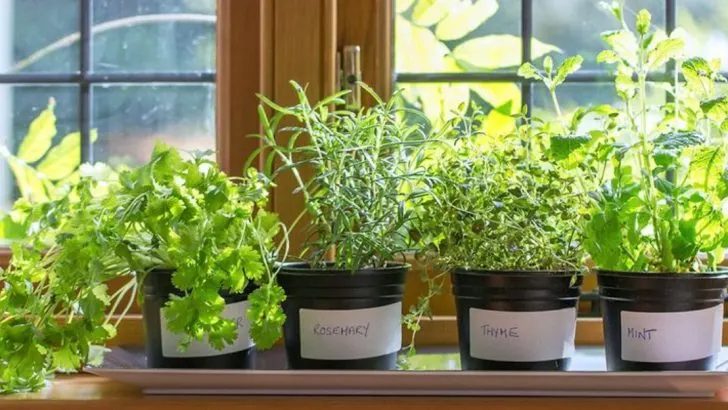Imagine having fresh, aromatic herbs right at your fingertips—no need for a trip to the store! Starting a herb garden in your kitchen is an easy and rewarding way to grow flavorful ingredients all year long, even if you don’t have outdoor space. Whether you have a sunny windowsill or just a small counter space, you can create your own herb garden with minimal effort.
Herbs like basil, mint, parsley, and thyme thrive indoors with the right care, providing you with a constant supply for cooking, teas, and natural remedies. Best of all, indoor herb gardens are low-maintenance, cost-effective, and incredibly satisfying.
In this article, we’ll show you exactly how to start and maintain a thriving herb garden in your kitchen, from choosing the right herbs to perfecting your indoor growing conditions.
Choosing the Right Herbs
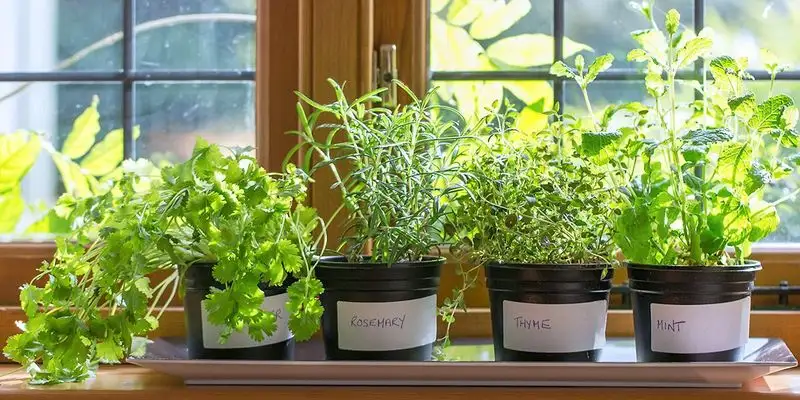
Selecting herbs involves considering your cooking habits and the available light in your kitchen. Basil, mint, and rosemary are excellent starter choices and thrive with plenty of sunlight. These herbs complement a wide range of dishes and are known for their aromatic appeal.
If your space is limited, opt for compact varieties that can grow in small pots. Ensure your selections match the light conditions; some herbs require full sun, while others can flourish in partial shade. By aligning your choices with your lifestyle and environment, you’ll set the stage for gardening success.
Quality Potting Soil

Invest in high-quality potting soil to provide a nutrient-rich foundation for your herbs. This soil should offer good drainage while retaining enough moisture to keep roots healthy. Look for a mix that contains organic matter like peat or compost.
Avoid using garden soil, as it tends to compact in pots and may harbor pests. A well-balanced potting blend supports plant growth and reduces the need for frequent fertilizing. By prioritizing quality soil, you’re giving your herbs the best chance to thrive in their new home.
Proper Lighting
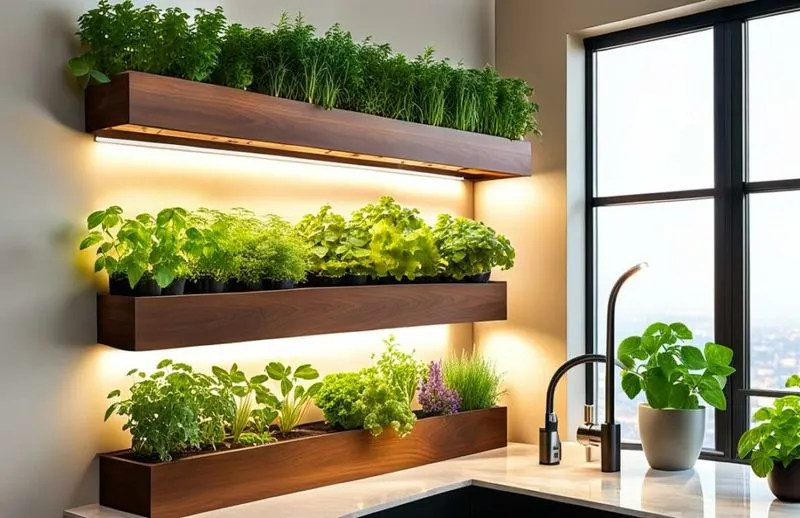
Adequate lighting is crucial for indoor herb gardens. Position your pots where they’ll receive at least 6-8 hours of sunlight daily, such as on a sunny windowsill. If natural light is insufficient, consider supplemental grow lights.
LED grow lights are energy-efficient and can be adjusted to suit different growth stages. Balance is key; too much direct sunlight can scorch leaves, while too little stunts growth. Evaluate the light conditions regularly and adjust the positioning to ensure your herbs receive optimal exposure.
Consistent Watering Routine
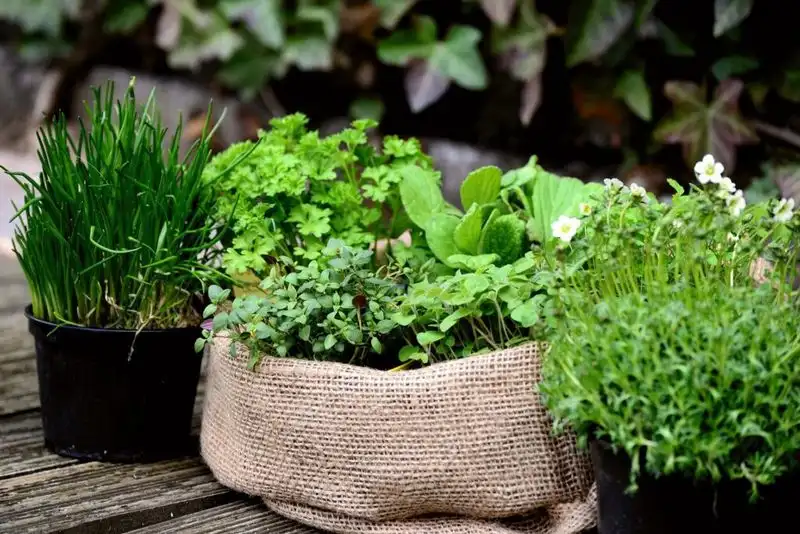
Establish a consistent watering routine to maintain healthy herbs. Over-watering can lead to root rot, a common issue in confined spaces. Allow the top inch of soil to dry out between waterings to prevent this.
Use a pot with drainage holes to avoid waterlogging, and consider the specific needs of each herb, as some prefer drier conditions than others. Observing your plants regularly helps identify when adjustments are needed, ensuring a thriving indoor garden environment.
Choosing the Right Containers
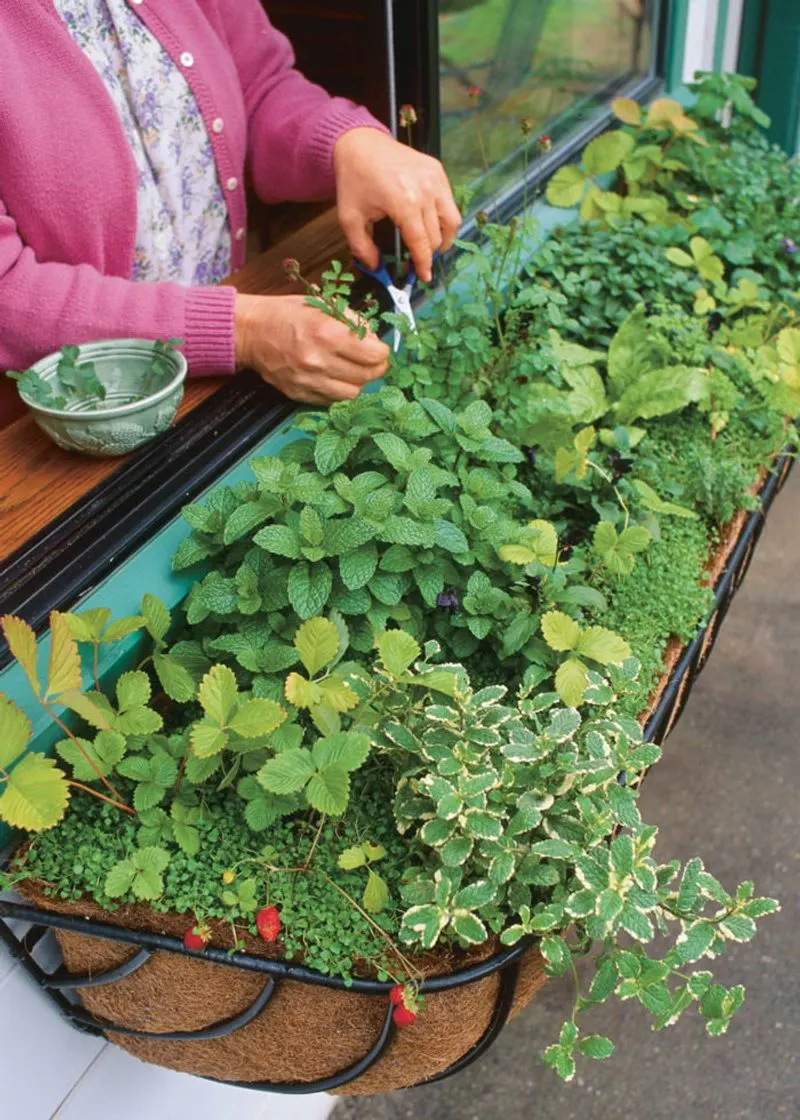
Select containers that suit your kitchen decor and the needs of your herbs. Pots should have drainage holes to prevent excess water from accumulating at the bottom, which can cause root damage.
Consider self-watering pots if you travel often or have a busy schedule. The material of the pot can also influence moisture retention; for instance, terracotta pots allow the soil to dry more quickly than plastic or ceramic ones. Choose wisely to create a practical and aesthetically pleasing setup.
Regular Pruning and Maintenance
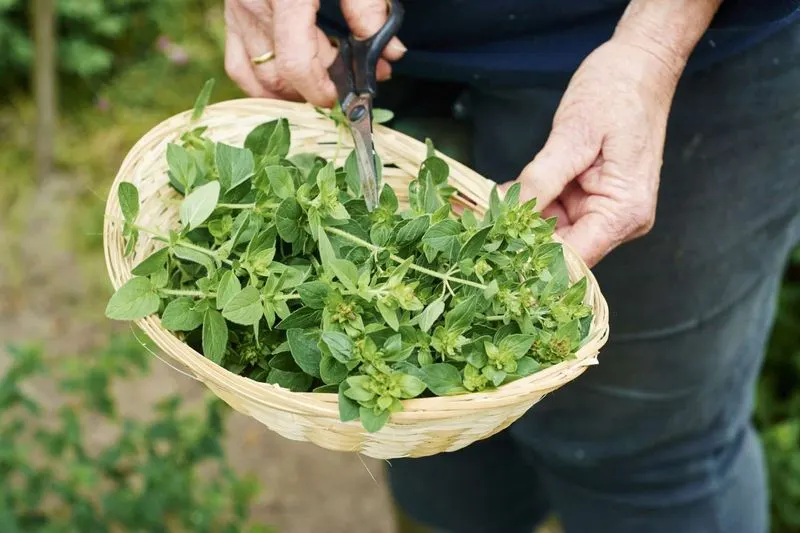
Regular pruning encourages bushier growth and prevents herbs from becoming leggy. Use sharp scissors to snip off leaves, stimulating new growth and ensuring a continuous supply.
Maintenance also involves removing any yellowing or dead leaves, which can detract from the plant’s appearance and health. Pruning isn’t just about aesthetics; it influences the overall vigor of your herbs, making your kitchen garden both productive and tidy.
Pest Management

Indoor herb gardens aren’t immune to pests. Regularly check leaves for signs of aphids or mites, which can quickly proliferate in confined spaces. Neem oil is an effective, natural remedy to treat infestations.
Keeping plants clean and providing proper air circulation can prevent many common issues. If pests are detected, isolate affected plants to prevent spreading. Consistent monitoring is key to maintaining a healthy garden, enabling your herbs to flourish without unwanted visitors.
Musical Growth Boost
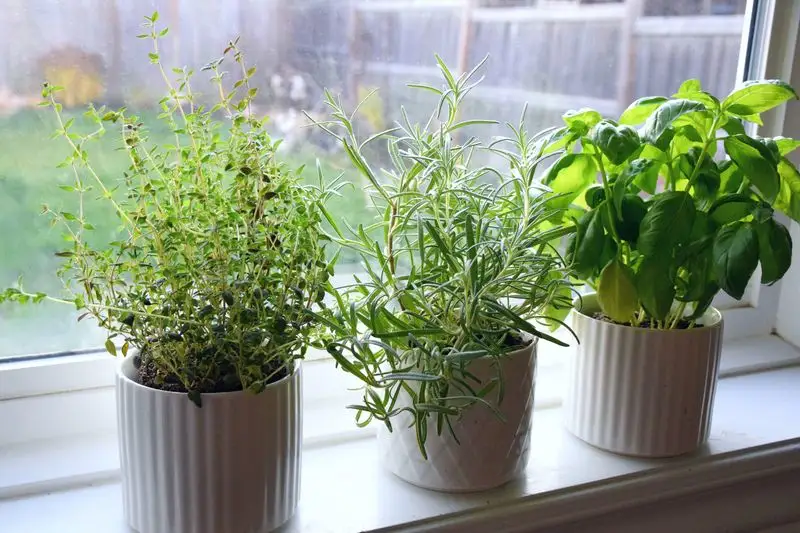
Did you know that music can impact the growth of plants? Playing classical music or any gentle tunes can stimulate the growth of your herbs. Studies suggest that plants respond well to vibrations, promoting stronger and healthier growth. Position your herb pots near a speaker or play live music if you enjoy a more interactive approach.
Experiment with different genres to see how your herbs react. It’s a fun and engaging way to connect with your plants. Plus, your kitchen will be filled with harmonious melodies, making the herb gardening experience even more enjoyable!
DIY Herb Ice Cubes
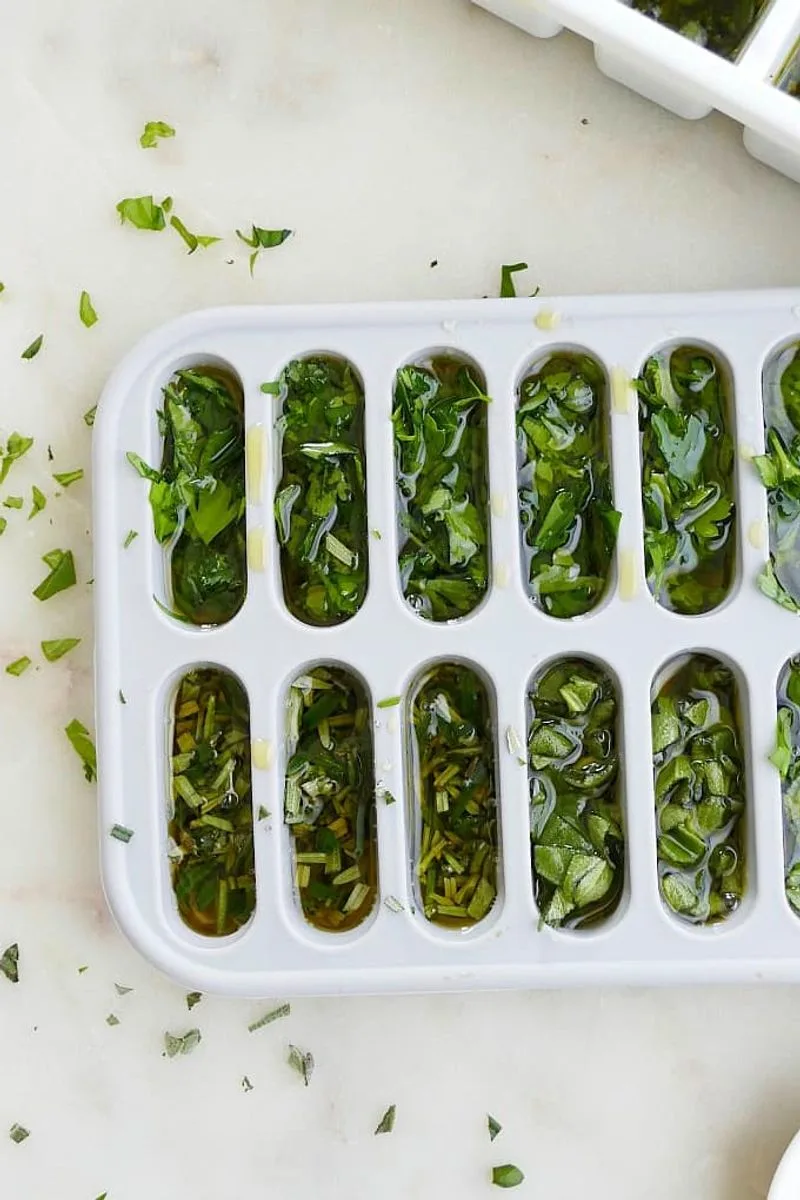
Herbs can be preserved in a unique way by freezing them into ice cubes. This method not only keeps them fresh but also adds a burst of flavor to your dishes. Simply chop your favorite herbs and place them in ice cube trays. Fill the trays with water or olive oil for a richer texture.
Once frozen, these cubes can be easily added to soups, stews, or even drinks. It’s a creative and practical way to ensure you always have fresh herbs at your fingertips. Your kitchen will appreciate the added touch of innovation!
Herb Infused Artwork
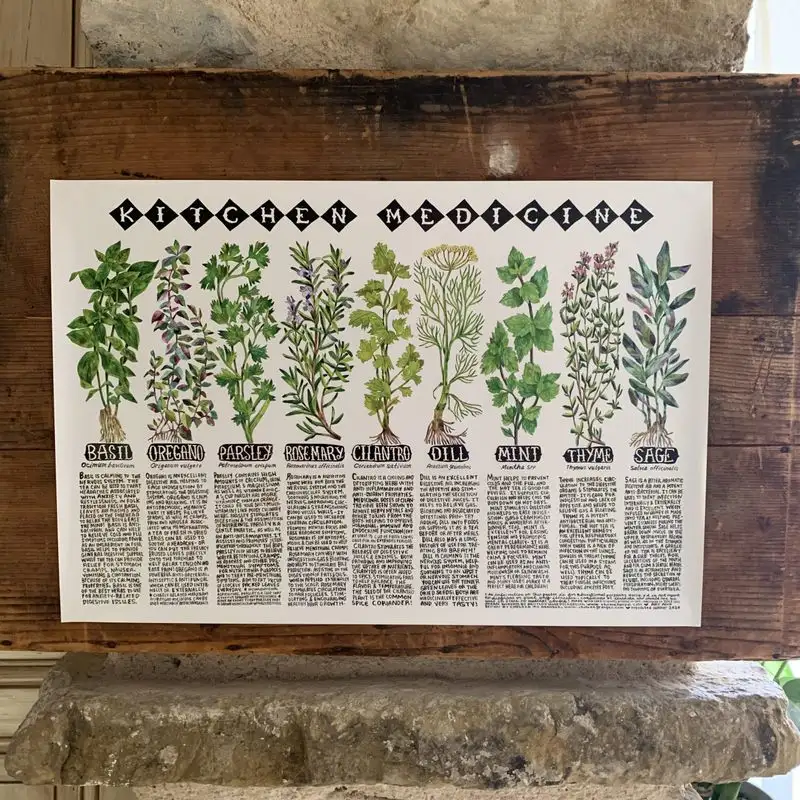
Combine your love for art with gardening by creating herb-infused artwork. Use herbs like rosemary or mint to make natural watercolors. Boil the herbs to extract their colors and use them for painting. This not only enhances creativity but also fills your kitchen with delightful herbal aromas.
Display your artwork in the kitchen to inspire your culinary adventures. This blend of art and gardening adds a personal touch to your space, making it uniquely yours. Let your imagination run wild and watch as your herb garden fuels your creative spirit!
Herb-Powered Aromatherapy
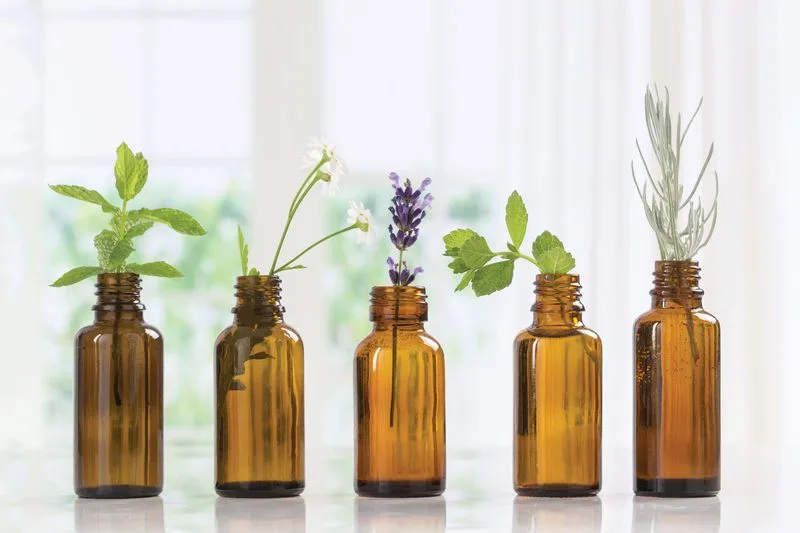
Transform your kitchen into a soothing sanctuary with herb-powered aromatherapy. Use herbs like lavender and basil to create homemade candles or essential oils. The calming scents can enhance your mood and well-being.
Place these aromatic creations near your herb garden to create a holistic environment. It’s a simple way to incorporate relaxation into your daily routine while keeping your kitchen fragrant and inviting. Your herb garden will not only thrive but also contribute to a peaceful and harmonious living space.

